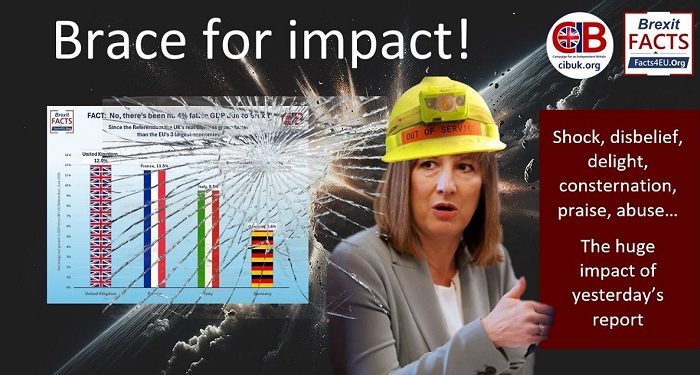The Eurozone crisis is far from over
Three years ago, it looked like Greece would have to leave the Euro. The country was bust and had to be bailed out by the European Central Bank (ECB), the International Monetary Fund and the European Commission (the so-called “Troika”) as no one wanted to loan such a profligate state any more money. Of course, the country should never have been allowed to join the Single Currency in the first place. The books were cooked to hide the huge debt burden the government owed even back in 2000. One of the culprits was Lucas Papademos, the governor of the Central Bank at the time. He was later installed as Greek Prime Minister without any ballot after the incumbent, George Papandreou, incurred the wrath of Brussels by threatening to put the Troika’s tough bailout proposals to a referendum and was forced to resign.
The governments in Spain and Ireland had not been guilty of such profligacy, but the Eurozone interest rates in the years before the Great Recession of 2007 were too low for their housing markets, creating an unsustainable boom that turned into bust. Also vulnerable were Portugal and Italy. Portugal in particular had been struggling because some of its most important exports, such as textiles, were being undercut by cheap goods from Asia. With both countries being tied to the Euro straitjacket, they were unable to respond in their time-honoured manner – devaluing their currencies. (Remember how many lire you used to get to the pound on those Tuscan holidays?)
However, although the Eurozone wobbled for a while and its break-up was prophesied by a number of respectable economists, it became apparent that the various EU institutions were prepared to go to quite extreme lengths to ensure no country withdrew from the Single Currency. One particularly significant moment in the crisis was a speech in London in July 2012 by Mario Draghi, the ECB governor, who promised to do “whatever it takes” to keep the Eurozone together. In the weeks following this speech, Draghi didn’t actually do very much, but his words calmed the markets and borrowing costs for the Spanish and Italian governments started to fall from levels widely regarded as unsustainable. Last year, even the Greek government was able to return to the money markets after recording a “primary surplus” (greater tax revenue than expenditure excluding borrowing costs) for the first time in years.
So it’s all rosy in the Eurozone garden now? Not quite. The price paid by countries who have required a bailout has been very high. In order to balance their books, the governments of Spain, Italy and Greece have been forced to slash their expenditure. While the number of public sector employees in Greece in particular has been too high and their pensions too generous, the scale and the rapidity of the cuts has resulted in a series of strikes and a sharp rise in unemployment. In Greece, over one quarter of the entire workforce has been out of work for almost two years, with youth unemployment remaining stubbornly above 50% in spite of many young people leaving the country to find work elsewhere. Two years ago, one third of business in central Athens had closed because of the downturn. The unemployment figures in Spain are equally dire. Over half the young people are out of work here too and there is very little sign of things improving.
Although no one is talking about bailouts, government finances are facing increasing pressure because of low or, in some cases, negative inflation. While very low inflation is good news for consumers, governments rely on inflation to pay their bills. If you are a government which has borrowed a hundred thousand euros over a 10-year period, it helps if prices and wages go up because, thanks to a bigger tax take, you receive more money to help pay off your debt by the end of the loan period. If prices are actually falling, as they are in Greece, Cyprus and Portugal, people defer buying big-ticket items in the hope that they will become cheaper. Besides this being bad for governments, it does not help manufacturers either, as they suffer a fall in orders.
Then there is the problem with some Eurozone banks – particularly but not exclusively those located in the Mediterranean countries. The precedent set by the bail-out of banks in Cyprus, where savers had to take a hit, means that any hint of insolvency will cause a run on the bank in question. Portugal’s Banco Espirito Santo rattled the markets last week, and this is unlikely to be a one-off incident. In November this year “stress testing” of over 100 Eurozone banking groups by the ECB due to start. In order to ensure that their assets meet the necessary criteria and do not offer the slightest hint of insolvency, banks are tidying up their balance sheets and keeping well clear of any loans with an element of risk. This, of course, is hardly a healthy environment for businesses seeking to borrow money to finance expansion. , and the recent problems with Portugal’s Banco Espirito santo .
Added together, these developments have resulted in a climate of stagnation in much of the Eurozone. The stock of both consumer credit and mortgage loans across the 18-nation single currency area are decreasing and manufacturing in several countries is also in decline. France’s industrial production shrank by 1.7% in May compared to April while Italy’s fell by 1.2%. It is widely believed that the Italian Prime Minister Matteo Renzi dropped his opposition to the nomination of Jean-Claude Juncker as President of the European Commission in exchange for an agreement to relax the austerity policies demanded by Germany as his government struggles to balance its books.
So far, these ongoing troubles in the Eurozone have been kept out of the headlines. However, Anthony Couglan’s recent report on Ireland (See link here ) which captures the sombre mood of a country which has been widely touted as “the poster-child for austerity”, illustrates what is rumbling beneath the surface. The Irish, like the Spanish, Portugese and Greeks, have made heroic sacrifices to keep the Single Currency afloat. But if another spark causes a renewed eruption of this still-ongoing crisis, how much more will they be prepared to take?










